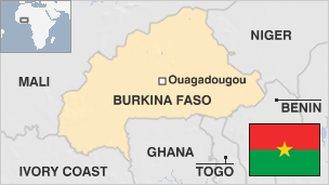
Facts and stats about Burkina Faso
Burkina Faso used to be known as Upper Volta. The small West African country owns substantial mineral deposits but still remains as one of the poorest countries in the world. Burkina Faso is well known for its parched land and vulnerability to famine. The country’s major source of revenue is agriculture but lack of jobs result in migration to nearby countries such as the Ivory Coast where some 3 million citizens from Burkina are currently employed.
The climate is tropical with wet and dry seasons although the rainfall is often insufficient. Temperatures regularly go beyond 40 degrees centigrade. In 2005 a combination of deficiency and locust invasion caused the destruction of almost 90 percent of the country's yield. In fact, huge quantities of livestock were sold to purchase grain at puffed up prices.
Since Burkina Faso gained its independence from France in 1960, this sub-Saharan nation has been plagued by numerous coup attempts and political turbulence. However, the country has been generally stable politically since 1987. International observers reported that the presidential elections held in November of 2005 were free and fair as well as relatively peaceful.
The World Bank and International Monetary Fund along with other foreign donors have been helping the government of Burkina Faso to implement socio-economic reforms. Nevertheless, the national economy calls for diversity. Besides, it is always adversely affected by climate changes and developments in commerce. Burkina Faso has inadequate natural resources and while there are deposits of gold, copper, iron and manganese, the country's largest gold mine was shut down more than a decade ago.

273,600 sq km
Sq. km. Ranked 72nd in 2008.